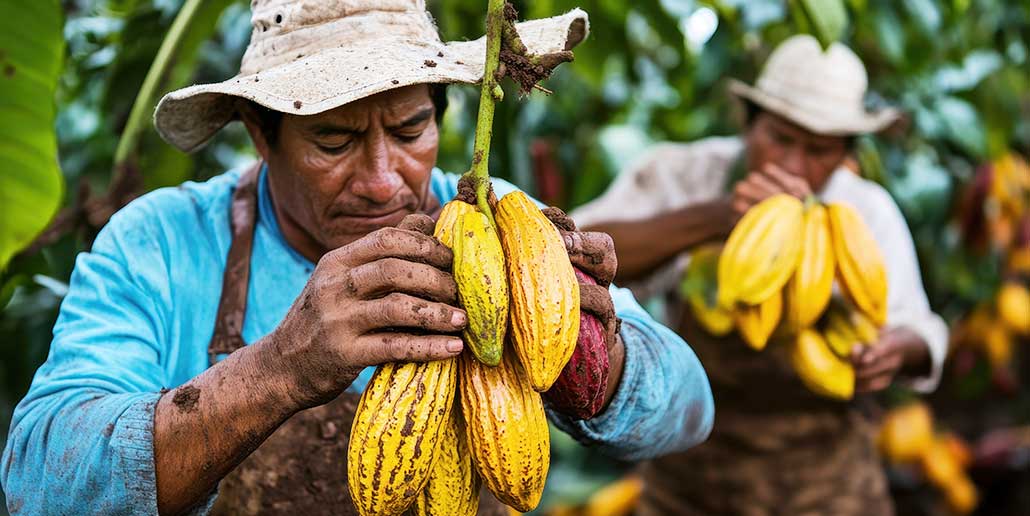
Latin America Chocolates
In Latin America, chocolate is much more than a sweet indulgence — it’s a profound symbol of heritage, tradition, and economic livelihood. As the birthplace of cacao, Latin America carries a deep and enduring relationship with this sacred plant. From ancient rituals to modern fine chocolate artistry, cacao remains an essential thread woven into the region’s cultural identity.
Today, we explore Latin America’s cacao story — past, present, and future — and how the region is leading a global revival of fine, native chocolate varieties.
Chocolate in Ancient Civilizations: Maya and Aztec Traditions
Long before Europeans encountered cacao, ancient civilizations across Mesoamerica — notably the Maya and the Aztec — revered the cacao tree as a divine gift.
The Maya were among the first to cultivate cacao, considering it a sacred crop. They used cacao beans as currency and prepared a ceremonial chocolate drink made from roasted cacao nibs mixed with water, spices, and sometimes chilli peppers. This unsweetened, frothy beverage was consumed during important rituals, marriages, and offerings to the gods.
The Aztec civilization similarly placed cacao at the heart of religious and social life. The emperor Montezuma II is said to have consumed vast quantities of cacao beverage daily, believing it bestowed energy and strength. Cacao beans were so valuable that they were often used as a medium of exchange — you could buy a turkey for 100 beans or a tamale for 3!
When Spanish conquistadors arrived in the Americas, they brought cacao back to Europe, adding sugar and milk to the bitter drink, forever altering how the world consumed chocolate.
Yet for indigenous cultures, cacao was never just food — it was medicine, currency, and sacred sustenance.
Traditional Uses: Drinking Chocolate and Mole
Even today, Latin American countries preserve ancient cacao traditions, especially in their culinary practices.
Drinking chocolate remains a staple across the region. In Mexico, thick, spiced hot chocolate made from rustic cacao disks (like Ibarra or Abuelita) is central to gatherings and holidays. Central American countries like Guatemala and Honduras also maintain traditions of cacao beverages, often prepared with cornmeal and spices.
Another iconic cacao-based dish is mole, especially mole poblano from Mexico. This rich, complex sauce combines chocolate with chilies, nuts, spices, and fruits. Mole showcases chocolate’s role beyond desserts — it’s a savory, earthy flavor enhancer deeply rooted in indigenous and colonial culinary fusion.
Traditional cacao is earthy, slightly bitter, aromatic, and layered — a far cry from the mass-produced, sugar-heavy chocolate many associate with the word today.
Modern Fine Chocolate Producers: Venezuela, Ecuador, Peru
In recent decades, Latin America has risen as a powerhouse in the fine chocolate and single-origin cacao world.
Countries like Venezuela, Ecuador, and Peru are home to some of the most prized cacao varieties:
- Venezuela is famous for its rare Criollo cacao, known for its delicate, complex flavors. Brands like El Rey and Chuao Chocolatier showcase Venezuela’s luxurious cacao heritage.
- Ecuador produces more cacao than any other country in Latin America, particularly the beloved Arriba Nacional variety, renowned for its floral and fruity notes. Artisans like Pacari Chocolate and República del Cacao lead the fine chocolate movement.
- Peru, once overlooked, has emerged as a leader in heirloom cacao cultivation, offering unique flavor profiles from Amazonian regions. Brands such as Cacaosuyo and Maraná have received global acclaim for their dedication to preserving native cacao strains.
Unlike commodity cacao — often grown with high yields and low quality — these Latin American producers focus on terroir (the influence of soil, climate, and landscape) to bring out cacao’s natural flavors, much like fine wine or specialty coffee.
How Latin America is Reviving Native Cacao Varieties
After centuries of colonial exploitation and homogenization, Latin America is undergoing a cacao renaissance. Farmers, indigenous communities, and chocolatiers are working to revive native cacao varieties that had nearly disappeared. Organizations like the Heirloom Cacao Preservation Fund (HCP) partner with Latin American growers to identify, protect, and promote genetically unique cacao trees. These efforts not only preserve biodiversity but also empower small farmers with access to premium markets.
Countries like Peru, Colombia, and Bolivia are investing in cacao research and education, helping farmers shift from low-grade bulk production to high-quality, sustainable farming practices.
The result? A chocolate landscape that is richer, more diverse, and more ethical — one that respects the sacred origins of cacao and honors the people who have cultivated it for millennia.
Latin America’s relationship with chocolate isn’t just history — it’s a living, evolving love story between people and plant. As the region revives its native cacao and reclaims its ancient chocolate traditions, the world is rediscovering chocolate’s deepest, most authentic roots.

